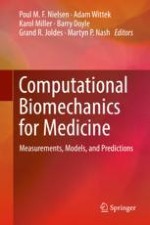2019 | OriginalPaper | Buchkapitel
Atlas of Acceleration-Induced Brain Deformation from Measurements In Vivo
verfasst von : Arnold D. Gomez, Andrew Knutsen, Deva Chan, Yuan-Chiao Lu, Dzung L. Pham, Philip Bayly, Jerry L. Prince
Erschienen in: Computational Biomechanics for Medicine
Aktivieren Sie unsere intelligente Suche, um passende Fachinhalte oder Patente zu finden.
Wählen Sie Textabschnitte aus um mit Künstlicher Intelligenz passenden Patente zu finden. powered by
Markieren Sie Textabschnitte, um KI-gestützt weitere passende Inhalte zu finden. powered by
